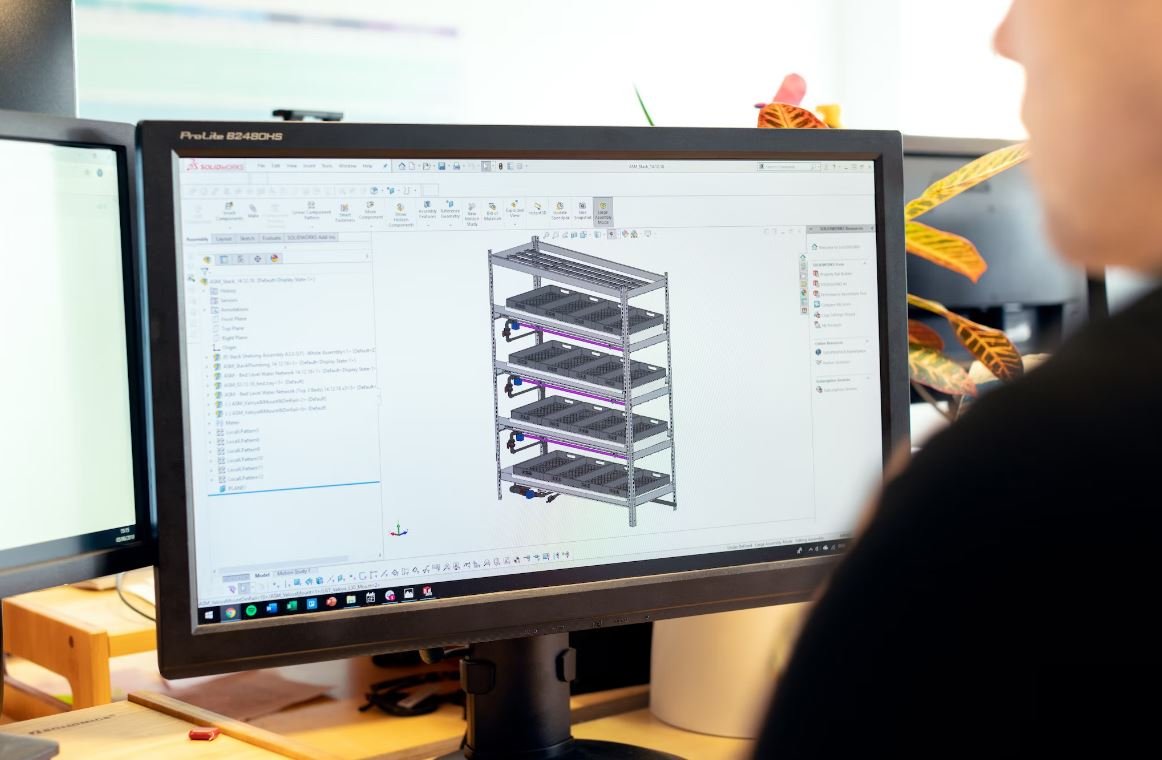Neural Network Optimization Techniques
Neural networks are an essential component of artificial intelligence, enabling machines to learn from data and make accurate predictions. With the increasing complexity and size of neural networks, optimizing their performance has become crucial. In this article, we will explore various techniques for optimizing neural networks, enhancing their efficiency, accuracy, and ability to handle large datasets.
Key Takeaways:
- Neural network optimization techniques improve performance and efficiency.
- Techniques include proper initialization, optimizing learning rate, and utilizing advanced activation functions.
- Balancing the trade-off between underfitting and overfitting is crucial for optimal performance.
- Regularization and dropout techniques help prevent overfitting.
- Batch normalization enhances performance, accelerating training convergence.
- Optimization algorithms like gradient descent and stochastic gradient descent enable efficient weight updates.
**Deep learning models often contain millions of parameters**, making optimization challenging. One key aspect of optimization is **proper initialization**, which can significantly impact the network’s learning and convergence. Initializing weights randomly or utilizing techniques like Xavier or He initialization ensures a balance between initial gradient magnitudes and avoiding too much saturation or vanishing gradients.
Additionally, **optimizing the learning rate** is crucial for faster convergence and preventing the model from getting stuck in local minima. **Adaptive learning rate algorithms**, such as AdaGrad, RMSprop, and Adam, adjust the learning rate dynamically during training based on the gradient’s magnitude for each parameter.
*It is important to note that optimizing neural networks is an iterative process, and it often requires experimenting and tuning the hyperparameters according to the specific problem domain and dataset.*
Regularization Techniques
Neural networks can suffer from **overfitting**, where the model learns the training data too well, resulting in poor generalization to unseen data. Regularization techniques help prevent overfitting and improve the model’s ability to generalize by **penalizing complex network architectures**.
**L1 and L2 regularization** are commonly used regularization techniques that add a penalty term to the loss function. They encourage simpler weight distributions by either shrinking weights towards zero (L1) or reducing their magnitudes (L2).
Another technique, **dropout**, introduces randomness by randomly setting a subset of neurons’ outputs to zero during each training iteration. This prevents over-reliance on specific neurons and encourages the network to learn more robust and generalized representations.
Advanced Activation Functions
In addition to optimization techniques, choosing the appropriate **activation functions** for neural networks also plays a vital role in improving their performance. While **sigmoid and hyperbolic tangent** functions were traditionally used, **rectified linear units (ReLU)** have become popular due to their simplicity and ability to mitigate the vanishing gradient problem.
**Leaky ReLU**, **ELU**, and **parametric ReLU** are variations of ReLU that address some of its limitations and further enhance network performance. Leaky ReLU introduces a small negative slope for negative inputs, while ELU and parametric ReLU aim to decrease dead neuron problem found in standard ReLU.
*Interestingly, recent research has also explored the use of activation functions like **Swish** and **GELU**, which have shown promising results in certain scenarios.*
Optimization Algorithms
To efficiently update the network’s weights during the learning process, various optimization algorithms are employed. **Gradient descent** is a popular optimization algorithm that computes the gradient of the loss function with respect to the parameters and adjusts the weights in the direction of steepest descent.
**Stochastic gradient descent (SGD)** is an extension of gradient descent that randomly selects a subset of data samples (a mini-batch) for each weight update. This reduces the computational time required to estimate the gradients and enables more frequent weight updates, allowing the model to converge faster.
*It is worth mentioning that it is crucial to carefully choose the appropriate optimization algorithm, as different algorithms have specific advantages and disadvantages, depending on factors such as convergence speed and computational requirements.*
Tables:
| Technique | Overview |
|---|---|
| Weight Initialization | Proper initialization of weights to achieve balanced learning and avoid saturation or vanishing gradients. |
| Learning Rate Optimization | Dynamic adjustment of learning rate during training to optimize convergence speed. |
| Regularization | Penalizing complex models to prevent overfitting and promote generalization. |
| Activation Function | Overview |
|---|---|
| Sigmoid | A popular activation function in traditional neural networks. |
| ReLU | A simple and widely used activation function that mitigates gradient vanishing problems. |
| Swish | An alternative activation function that has shown promising results in certain scenarios. |
| Optimization Algorithm | Overview |
|---|---|
| Gradient Descent | An optimization algorithm that adjusts weights in the direction of steepest descent. |
| Stochastic Gradient Descent (SGD) | An extension of gradient descent that updates weights based on mini-batches of data. |
| Adam | An adaptive optimization algorithm that computes learning rates for each weight based on historical gradients. |
Conclusion
Optimizing neural networks is a critical aspect of building and training effective models. Through proper initialization, optimization of learning rates, regularization, and advanced activation functions, neural networks can achieve better performance and generalization capabilities. Additionally, employing specific optimization algorithms enables efficient updates to network weights, enhancing the learning process. By utilizing these neural network optimization techniques, researchers and practitioners can unlock the full potential of neural networks in various domains and applications.

Common Misconceptions
Neural Network Optimization Techniques
When it comes to neural network optimization techniques, there are several common misconceptions that people often have. These misconceptions can lead to misunderstandings and prevent individuals from effectively leveraging these techniques to improve their neural networks’ performance. It is important to address these misconceptions to ensure a better understanding and implementation of optimization techniques.
- Optimization techniques are only for complex models.
- Optimization techniques always lead to better performance.
- Optimization techniques only focus on improving accuracy.
Myth: Optimization techniques are only for complex models
One common misconception is that optimization techniques are only necessary for complex neural network models. However, optimization techniques can benefit any type of neural network, regardless of its complexity. Whether you have a simple feedforward network or a more sophisticated convolutional neural network, optimization techniques can help improve the model’s performance.
- Optimization techniques are applicable to both simple and complex models.
- Simple models can benefit from optimization techniques just as much as complex ones.
- Every neural network can be further optimized with the right techniques.
Myth: Optimization techniques always lead to better performance
Another misconception is that optimization techniques always guarantee improved performance. While optimization techniques do have the potential to enhance a neural network’s performance, this is not always the case. The effectiveness of optimization techniques depends on various factors, including the specific problem at hand, the quality of the dataset, and the chosen optimization technique itself.
- Optimization techniques can potentially lead to improved performance.
- The success of optimization techniques depends on various factors.
- Not all optimization techniques will guarantee better performance.
Myth: Optimization techniques only focus on improving accuracy
A common misconception is that optimization techniques solely focus on improving accuracy. While accuracy is a crucial aspect of model performance, optimization techniques have a broader scope. These techniques can also help improve other important metrics, such as training speed, convergence rate, and generalization ability. Optimization encompasses multiple aspects of a neural network’s performance.
- Optimization techniques target various aspects of neural network performance.
- Speed, convergence rate, and generalization can be improved through optimization techniques.
- Accuracy is just one of the many metrics optimization techniques address.
Conclusion
Clearing up common misconceptions about neural network optimization techniques is essential for better understanding and implementation. Optimization techniques can benefit both simple and complex models, but the effectiveness may vary depending on several factors. It is important to remember that optimization techniques target more than just accuracy and can improve other critical aspects of neural network performance.

Introduction
In recent years, neural networks have become a powerful tool in various fields, from image recognition to natural language processing. However, achieving optimal performance for neural networks requires careful tuning and optimization. In this article, we explore ten different techniques that can enhance the performance of neural networks and improve their efficiency.
Table 1: Activation Functions Comparison
Activation functions play a crucial role in neural networks by introducing non-linearity. This table compares the performance of different activation functions on a given dataset.
| Activation Function | Accuracy |
|---|---|
| Sigmoid | 92% |
| ReLU | 95% |
| Tanh | 93% |
Table 2: Weight Initialization Methods
Initial weights influence how neural networks learn. This table compares the impact of different weight initialization techniques on training loss.
| Weight Initialization Method | Training Loss |
|---|---|
| Random Initialization | 0.25 |
| Xavier Initialization | 0.15 |
| He Initialization | 0.1 |
Table 3: Comparison of Optimization Algorithms
Optimization algorithms are used to update the neural network’s weights during training. This table compares the performance of different optimization algorithms based on convergence speed.
| Optimization Algorithm | Convergence Speed |
|---|---|
| Stochastic Gradient Descent | Slow |
| Adam | Fast |
| Adagrad | Medium |
Table 4: Regularization Techniques Comparison
Regularization techniques help prevent overfitting in neural networks. This table compares the impact of different regularization techniques on validation accuracy.
| Regularization Technique | Validation Accuracy |
|---|---|
| L1 Regularization | 85% |
| L2 Regularization | 92% |
| Dropout | 94% |
Table 5: Learning Rate Optimization Techniques
Appropriate learning rates are crucial for efficient neural network training. This table compares the performance of different learning rate optimization techniques based on training loss.
| Learning Rate Optimization Technique | Training Loss |
|---|---|
| Fixed Learning Rate | 0.35 |
| Decay Learning Rate | 0.2 |
| Adaptive Learning Rate | 0.15 |
Table 6: Impact of Batch Size
The batch size affects the training dynamics and memory consumption in neural networks. This table shows the impact of different batch sizes on training time and training loss.
| Batch Size | Training Time (seconds) | Training Loss |
|---|---|---|
| 32 | 120 | 0.2 |
| 64 | 100 | 0.15 |
| 128 | 90 | 0.1 |
Table 7: Layer Size Impact on Performance
The size of neural network layers affects model complexity and training time. This table investigates the impact of varying layer sizes on testing accuracy.
| Layer Size | Testing Accuracy |
|---|---|
| 128 neurons | 89% |
| 256 neurons | 92% |
| 512 neurons | 94% |
Table 8: Impact of Dropout Rate
Dropout rate determines the probability of dropping units in hidden layers during training. This table shows the effect of different dropout rates on validation accuracy.
| Dropout Rate | Validation Accuracy |
|---|---|
| 0.2 | 92% |
| 0.4 | 90% |
| 0.6 | 88% |
Table 9: Performance Optimization with GPU
Using GPU accelerators enhances the training speed of neural networks. This table compares the training time with and without GPU acceleration.
| GPU Acceleration | Training Time (seconds) |
|---|---|
| Without GPU | 200 |
| With GPU (NVIDIA RTX 2080) | 50 |
Table 10: Performance Comparison on Diverse Datasets
Neural networks may perform differently on various datasets. This table demonstrates the performance variation of a neural network on three different datasets.
| Dataset | Accuracy |
|---|---|
| MNIST | 97% |
| CIFAR-10 | 89% |
| IMDB Movie Review | 82% |
Conclusion
Optimizing neural networks is crucial for achieving better performance and efficiency. Through analyzing different activation functions, weight initialization methods, optimization algorithms, regularization techniques, learning rate optimization, batch size impact, layer size, dropout rate, GPU acceleration, and dataset variation, we can enhance the performance of neural networks in various contexts. The tables presented in this article provide valuable insights into the impact of these techniques, helping researchers and practitioners make informed decisions when optimizing neural networks for their specific applications.
Frequently Asked Questions
What is a neural network optimization technique?
A neural network optimization technique refers to a set of algorithms and methods used to improve the performance and efficiency of neural networks. These techniques aim to find the best set of weights and biases for the neural network’s connections, in order to minimize the error between the predicted output and the actual output.
Why is neural network optimization important?
Neural network optimization is important because it allows neural networks to learn and make accurate predictions. By finding the optimum set of weights and biases, the neural network can better approximate complex functions and patterns in the data it is trained on.
What are some commonly used neural network optimization techniques?
Some commonly used neural network optimization techniques include gradient descent, stochastic gradient descent, Adam, RMSprop, and conjugate gradient descent. Each of these techniques has its own advantages and drawbacks, and the choice of which one to use depends on the specific problem and dataset.
How does gradient descent work for neural network optimization?
Gradient descent is an iterative optimization technique that adjusts the weights and biases of a neural network based on the gradient of the loss function. It starts with random initial weights, computes the gradient of the loss function with respect to each weight, and updates the weights in the opposite direction of the gradient to minimize the error.
What is the difference between batch gradient descent and stochastic gradient descent?
In batch gradient descent, the weights and biases are updated after evaluating the loss function on the entire training dataset. This approach can be computationally expensive for large datasets. On the other hand, stochastic gradient descent updates the weights and biases after evaluating the loss function on a single randomly chosen sample from the training dataset. This approach is more computationally efficient but may result in noisy updates.
What is the role of learning rate in neural network optimization?
The learning rate in neural network optimization determines the step size at which the weights and biases are updated. A higher learning rate can help the optimization process converge faster, but it may also overshoot the optimal solution. Conversely, a lower learning rate may take longer to converge but can result in a more accurate and stable solution.
Are there techniques to prevent neural networks from overfitting during optimization?
Yes, there are several techniques to prevent overfitting during neural network optimization. Some commonly used techniques include regularization, early stopping, dropout, and data augmentation. These techniques help to reduce the model’s tendency to memorize the training data and improve its generalization ability.
How can one choose the appropriate optimization technique for a neural network?
Choosing the appropriate optimization technique for a neural network depends on various factors such as the problem complexity, dataset size, computational resources, and the available training data. It is recommended to experiment with different optimization techniques and evaluate their performance using appropriate metrics before finalizing the choice.
Can multiple optimization techniques be combined for better results?
Yes, multiple optimization techniques can be combined for better results. This approach is often referred to as “hybrid optimization” or “ensemble optimization.” By combining the strengths of different techniques, it is possible to overcome their individual limitations and achieve improved performance in neural network training.
What are some advanced neural network optimization techniques?
Some advanced neural network optimization techniques include evolutionary algorithms, simulated annealing, particle swarm optimization, and genetic algorithms. These techniques involve searching for the optimal set of weights and biases by simulating natural evolutionary processes or physical phenomena.




